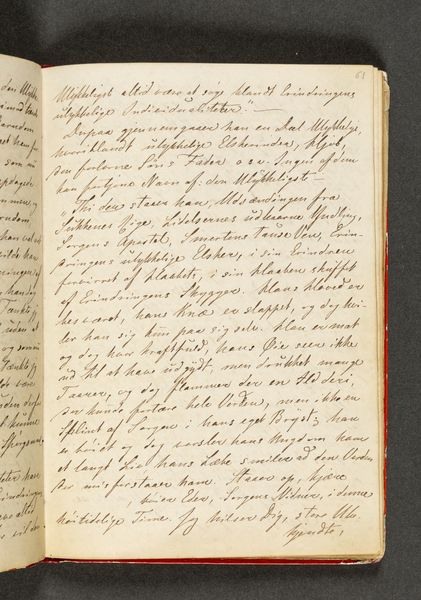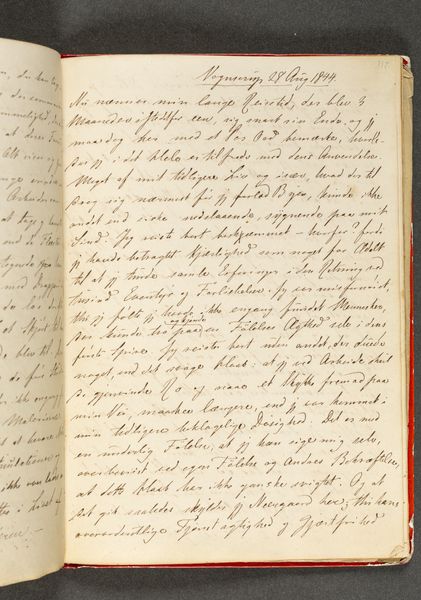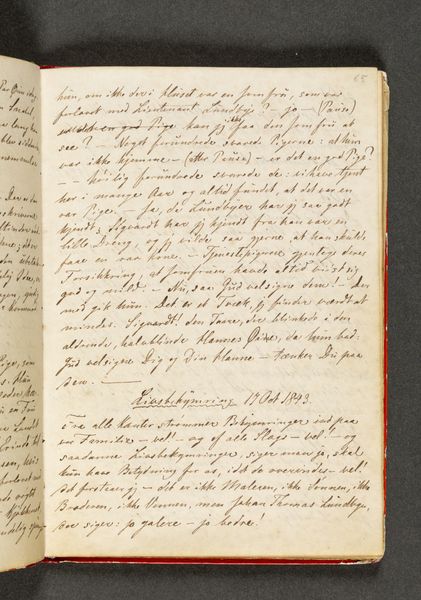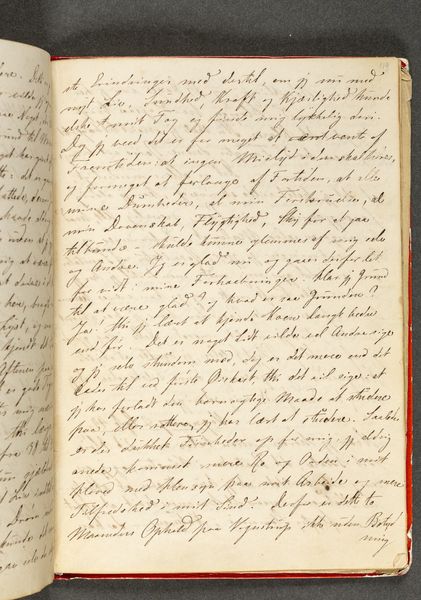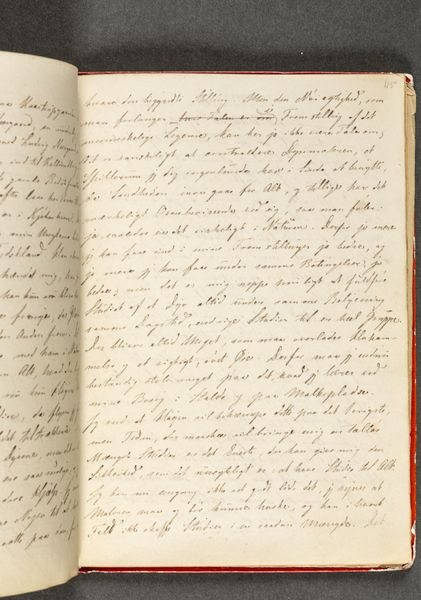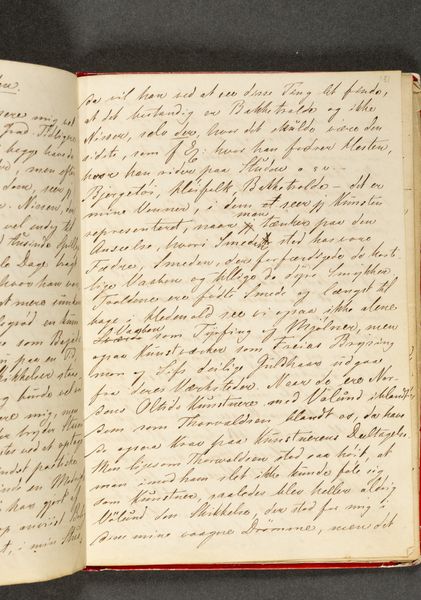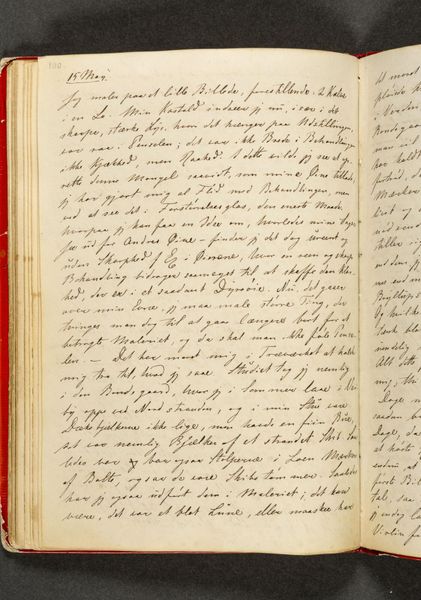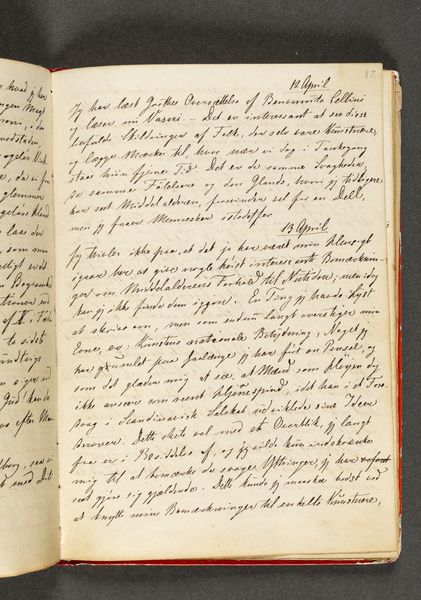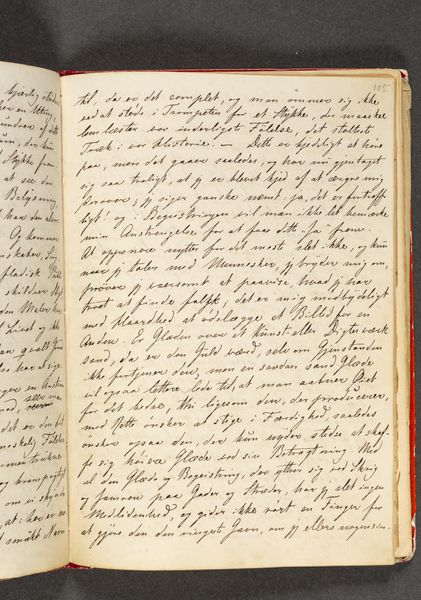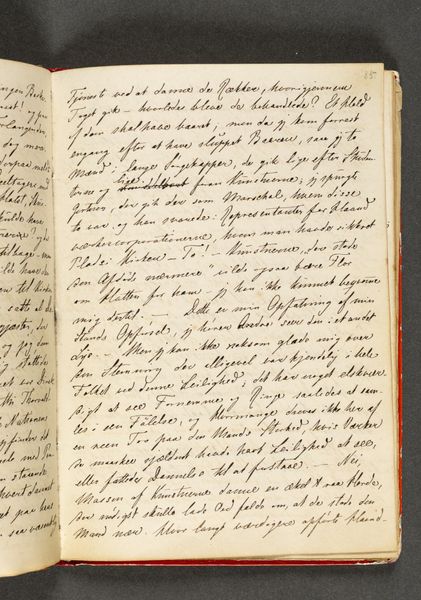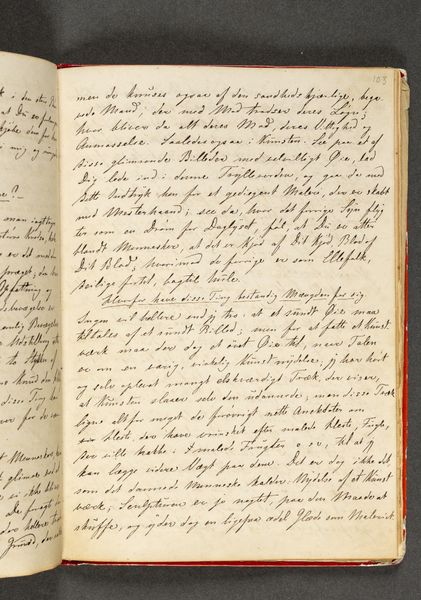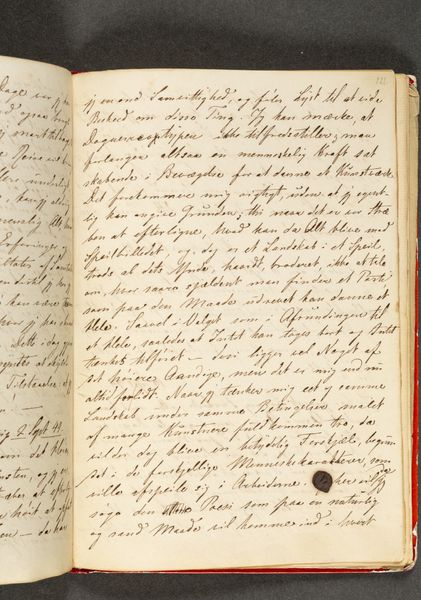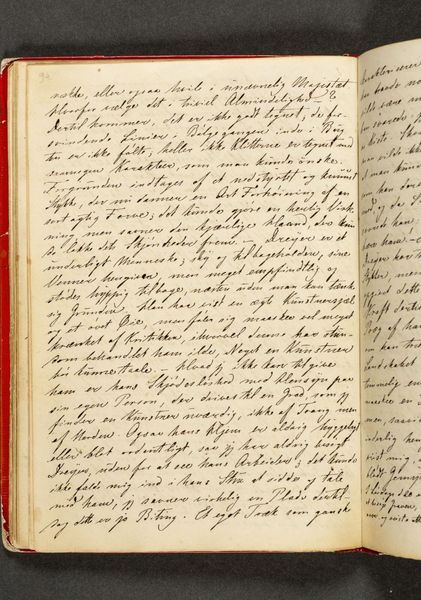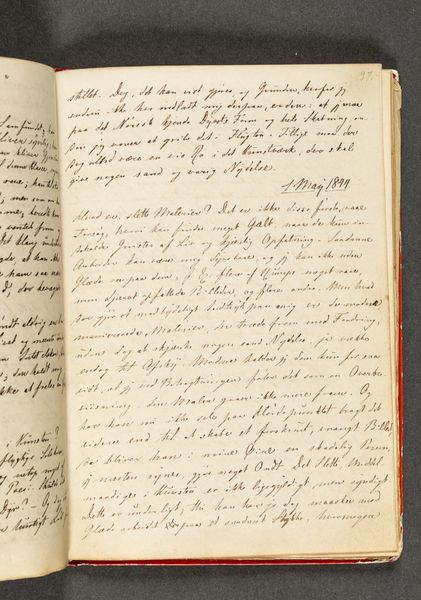
drawing, paper, ink
#
drawing
#
paper
#
ink
#
romanticism
Dimensions: 192 mm (height) x 133 mm (width) (bladmaal)
Curator: Here we have “Dagbog. Side 71,” or "Diary. Page 71," a work created around 1844 by Johan Thomas Lundbye. It's a page from his journal, rendered in ink on paper, housed at the SMK, the National Gallery of Denmark. Editor: My first impression? Intimate and dense. The page is filled with script; a tightly-packed block of text suggesting layers of thought. I am getting a distinct feeling of immersion into a private, interior world through materiality of ink. Curator: Exactly. As an art historian, my approach invites you to engage with how art reflects cultural values and sociopolitical concerns, right? So with Lundbye, context is everything. Here, you're granted privileged access to the artist's inner ruminations at a pivotal juncture in Danish Romanticism, as he is grappling with shifting notions of national identity. This page, densely inscribed as you say, isn't just personal—it participates in broader conversations about Danish-ness. Editor: It speaks to that sense of “making” identity too. You see the very material act of writing— the repetitive pressing of pen to paper— as Lundbye’s labor toward self-understanding or maybe constructing this notion of collective belonging. Curator: Indeed. The act of recording shapes his subjectivity, while he negotiates between universal ideals and the specific contours of Danish experience. In terms of its cultural studies angle, consider the performativity embedded within this intimate document; Lundbye simultaneously reveals and constructs aspects of himself, inviting speculation on the boundaries between lived reality and conscious self-representation. Editor: How fascinating, this emphasis of art-making, of a private production and the raw, personal material within the labor. Curator: Yes, the art world’s engagement with labor, the artist, nation. This aligns with my conviction that examining how art portrays the marginalized, unveiling overlooked stories of everyday life is important. These journal entries present another face in considering his artistry through that. Editor: Lundbye is using these humble materials—ink, paper, his own hand—to weave a tapestry of personal reflection interwoven with historical and cultural awareness. Curator: That sums it up beautifully. Seeing art as the manifestation of a creative person as well as political thinking enriches and expands our understanding of Lundbye. Editor: Absolutely. And by thinking of process, we’ve made sense of the page and of Lundbye.
Comments
No comments
Be the first to comment and join the conversation on the ultimate creative platform.
